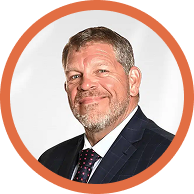Choosing the right health insurance plan can feel overwhelming.
Between tight open enrollment deadlines, different benefit options, and the financial pressure of rising costs, it’s easy to default to whatever seems simplest — but that can also mean missing out on important opportunities to save money and improve coverage. Health insurance optimization is about understanding your needs and matching them with the right plan to protect your health and your wallet.
The first step is to assess your personal and family health needs before looking at costs. Ask yourself a few key questions:
- How often do you visit the doctor?
- Do you or your dependents have chronic conditions or ongoing prescriptions?
- Are there major medical events on the horizon, such as surgery or childbirth?
An example of the nuance of these decisions would be for a younger healthy married couple who typically have infrequent doctors' visits would likely be better served with a lower premium, higher deductible plans each year. This same couple is now expecting the birth of a child during open enrollment season. Now would be the time to go with a higher monthly premium, lower deductible and small max out-of-pocket plan. While it would cost more per month than their historically used plan, it would save them on expenses during a different season of their lives.
Another factor is understanding what type of plan you are selecting. Two of the most common options are Health Maintenance Organizations (HMOs) and Preferred Provider Organizations (PPOs). HMOs typically have lower premiums and require you to select a primary care physician who coordinates your care and provides referrals to specialists. PPOs offer more flexibility and a larger network of providers, including out-of-network options, but usually come with higher costs. The key is to verify that your preferred doctors and facilities are in-network before finalizing your choice — otherwise, you could face unexpected expenses.
For healthy individuals or families who rarely visit the doctor, a high-deductible health plan can be a smart option. These plans come with lower monthly premiums and pair well with a Health Savings Account (HSA). HSAs are unique in that they provide triple tax benefits: contributions are tax-deductible, growth is tax-free, and withdrawals for qualified medical expenses are tax-free. Because of these tax advantages, HSA accounts should be a heavy consideration to fund in your order of operations for where to save your money. To maximize the tax benefits, it is ideal to have an emergency fund that can help fund medical expenses instead of using the account initially, to allow the account time to grow. The Big Beautiful Bill signed in 2025 has expanded the plans that offer this option. These invested dollars can be used later for qualified expenses such as Medicare premiums or long-term care needs — making the HSA one of the most versatile savings tools available.
Beyond plan selection, it’s important to explore the added benefits your insurance may offer. Many plans reward preventive care such as annual checkups, screenings, or even healthy lifestyle activities. Logging exercise, participating in wellness programs, or tracking steps can sometimes earn small cash incentives or premium discounts. These perks not only encourage healthy habits but also make your insurance more valuable throughout the year.
If you and your spouse both have employer-sponsored insurance, compare plans carefully. It might make sense for each to stay on individual coverage or combine under one plan depending on premium costs, deductibles, and provider networks. Running the numbers for different scenarios can reveal which setup provides the best balance of cost and coverage for your family.
The bottom line is that health insurance decisions should be made intentionally, not reactively. Every family’s needs are different, so what works for a friend or coworker may not be right for you. Taking time to review your options and understand how each piece fits into your broader financial plan ensures you’re protected — both medically and financially.
Financial Enhancement Group is an SEC Registered Investment Advisor.






